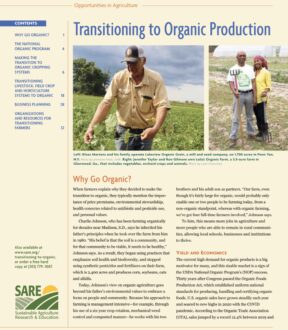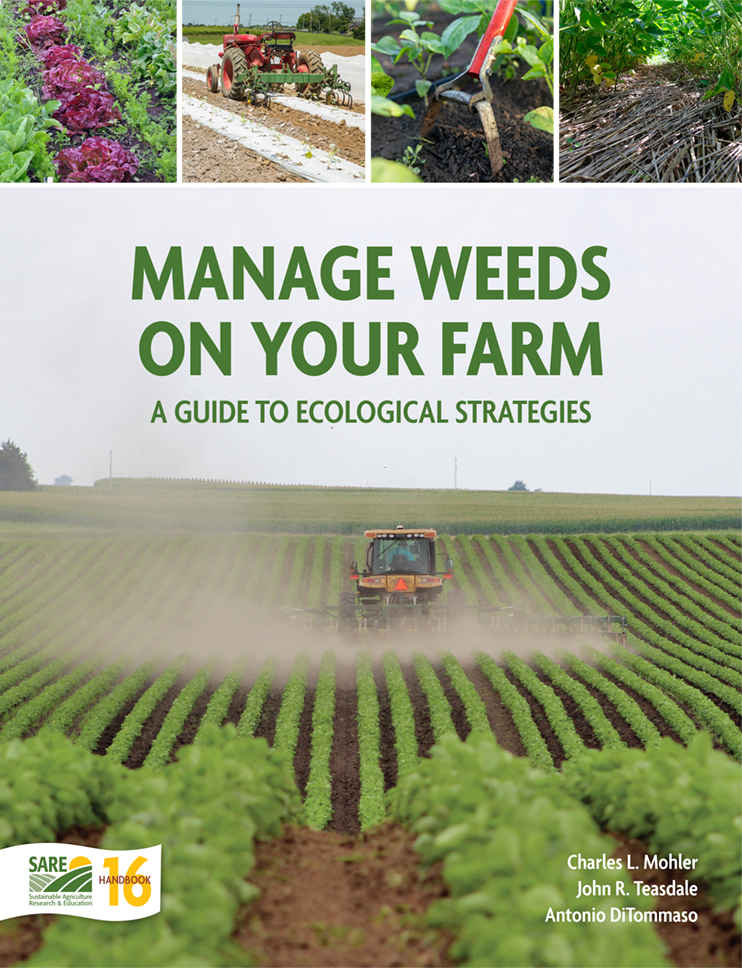Many farmers who want to transition to organic production will need to change their practices or adopt new farming strategies in common areas of management, regardless of what they produce. These include building and maintaining soil health, responsibly incorporating tillage, managing pests and omitting prohibited substances. Generally, organic production becomes more management intensive because it integrates multiple aspects of a production system—for example, practices such as crop rotation and cover cropping simultaneously improve soil health and help manage weeds, insect pests and diseases.
Consulting an organic certifier early in the planning process will give you a clear idea of how you’ll need to adapt your production practices to align with NOP regulations.
Anu Rangarajan, a Cornell University horticulture specialist and director of the Cornell Small Farms Program, advises that you begin by identifying and resolving major problems in your current system, such as perennial weeds, poor drainage or low soil organic matter. “If you haven’t tackled these problems, you should fix them before you … transition to an organic system, which is going to require tighter management,” she says.
Success with transition also hinges on gaining experience with the practices that are specific to organic farming, including:
- crop rotation
- cover cropping
- addition of organic fertility sources
- disease prevention
- integrated pest and weed management
- conservation tillage
- soil management
- incorporation of biodiversity
Many of these practices, such as managing healthy soil, can be integrated into your system before transition in order to reduce problems and risk during the transition.
Healthy Soils
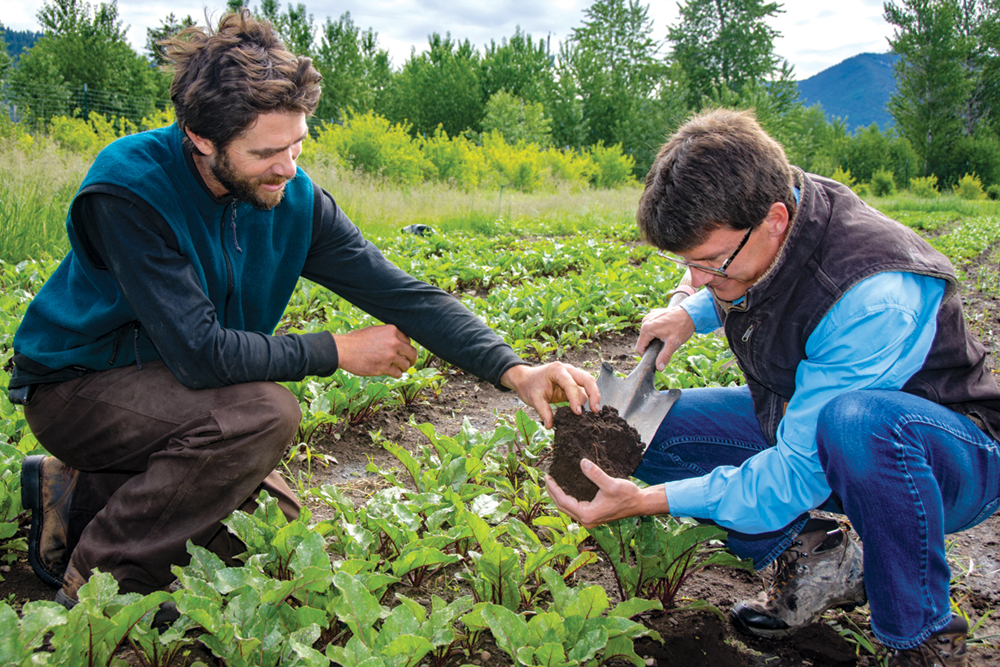
The foundation of all organic farming systems is healthy soil. Successful organic farmers build and manage healthy soils over the long run with cover crops and crop rotations, compost and manures, reduced tillage and no-till practices, and other methods. These practices and amendments feed not only your crops but also the soil organisms. In fact, the underlying mantra of organic systems is “feed the soil so the soil feeds the plants,” because in organic systems, the primary source of nutrients is the soil itself. As soil organic matter builds up, so too do populations of important soil organisms, from large ones like earthworms to microorganisms like bacteria and fungi. Taken together, soil organic matter in combination with organisms can support:
- Improved soil structure, aeration, water infiltration and drainage
- Improved nutrient availability from decomposing organic materials
- Reduced nutrient loss through leaching, soil erosion and runoff
A lot of people don’t think of the soil as an ecosystem, but, in fact, it’s probably the most complex ecosystem on earth. A healthy soil should be breathing out carbon dioxide, breathing in oxygen. It should hold and absorb water so the plants can survive between rains. It should resist erosion.
Ray Weil, University of Maryland soil science professor.
While most organic farms rely on tillage for weed control and bed preparation, the regular addition of organic matter through cover crops and manure applications, along with other soil-building practices, can offset the damage caused by tillage and help you maintain healthy soils.
Crop Rotations
Although practices vary from farm to farm and region to region, at the core of any successful annual organic farming system is the crop rotation. As the main management tool for all aspects of the farming system, including weeds, insect pests, soils and crop production, a well-planned rotation is more than the sum of its parts, and it addresses the connections between all of those factors. According to Switching to a Sustainable System by Fred Kirschenmann, a successful rotation:
- Includes the use of cover crops to provide fertility, control weeds and provide habitat for beneficial insects
- Has a diversity of plant species to encourage natural predators, discourage pest and disease buildup, and minimize economic and environmental risk
- Provides a balance between soil conservation and crop production by adding organic matter to the soil to both supply nutrients and improve soil quality properties such as water infiltration and waterholding capacity
- Provides weed control by alternating between warm- and cool-weather plants, and by including weed-inhibiting plants (such as rye and sorghum)
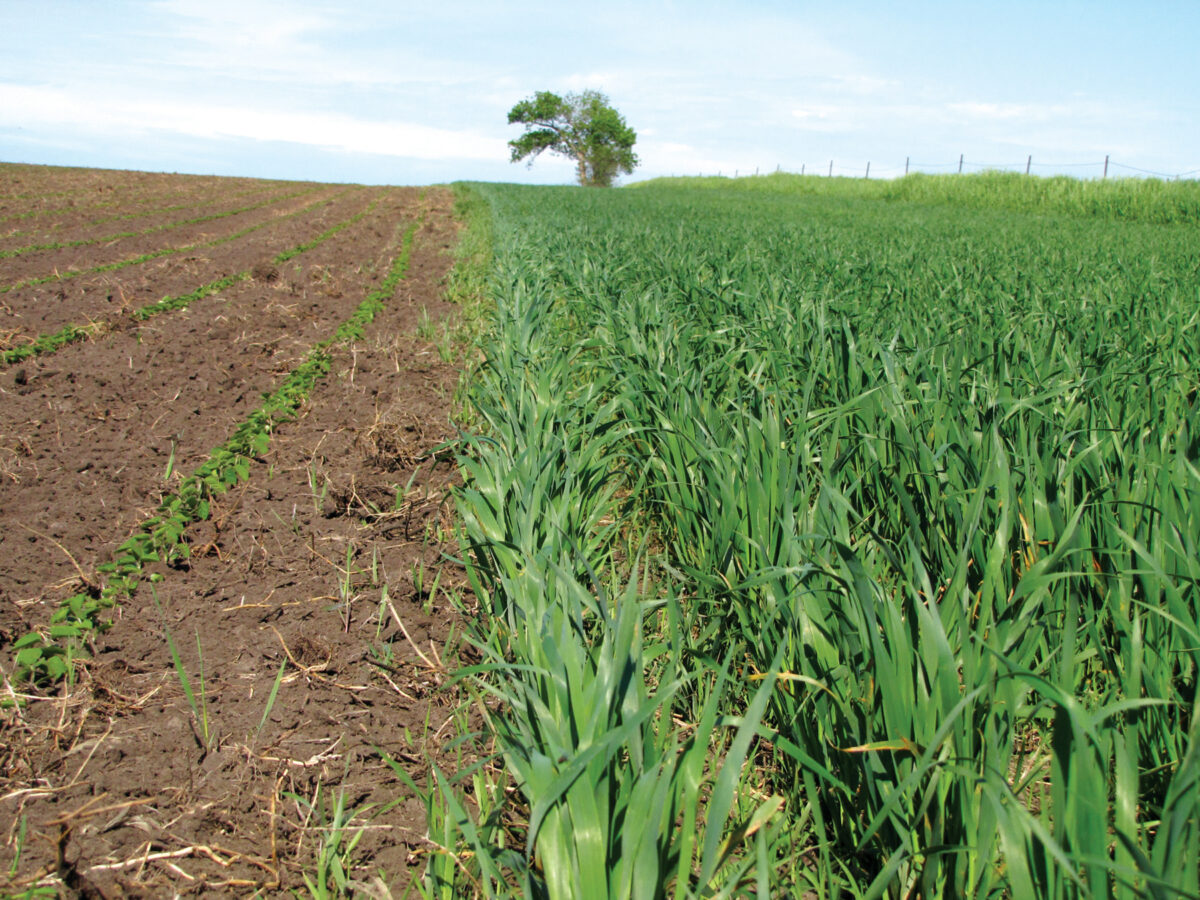
The book Crop Rotation on Organic Farms provides in-depth guidance on the principles of crop rotation, including sample rotations taken from 16 organic vegetable farms in the Northeast (for more, see Chapter 4 of the book). Collectively, these experienced farmers are guided by the following “conventional wisdom” when planning their crop rotations:
- Avoid planting the same crop family in the same field too often
- Alternate cover crops with cash crops
- Alternate deep-rooted crops with shallow, fine-rooted crops
- Precede heavy feeders with nitrogen-fixing cover crops
- Avoid following a root crop with another root crop
According to ATTRA’s Organic Crop Production Overview, a standard organic rotation in the Corn Belt might consist of alfalfa, corn, soybeans and a small grain. This is true for Charlie Johnson, the organic grain farmer from South Dakota, who sticks firmly with a six-year crop rotation of oats–alfalfa (two years)–soybeans–corn–soybeans. “We don't base our cropping or planning decisions on, well, organic corn will bring in more this year, or wheat or some other commodity,” he says. “We let agronomy drive our decisions and not necessarily the market.”
A rotation like this accomplishes multiple functions:
- The legumes fix nitrogen, providing for the subsequent non-legumes in the rotation.
- Several pest cycles are interrupted, especially that of the northern and western rootworm species, which can be devastating to corn.
- Several plant diseases are suppressed, including soybean cyst nematode.
- Weed control is enhanced when perennial weeds are destroyed through cultivation of annual grains; most annual weeds are smothered or eliminated by mowing when alfalfa is in production.
Another benefit of including a multi-year phase of perennials in a rotation (e.g., alfalfa or mixed species hay) is that it gives the soil time to rest and rebuild.
Cover Crops, Compost and Manure
Cover crops, which build soil fertility, provide much of the soil health improvement in organic annual systems. Organic matter added through cover crops and soil amendments improves soil structure, which in turn improves water infiltration, water holding capacity and resistance to erosion. In the Sustainable Agriculture Farming Systems (SAFS) project at the University of California, Davis, a long-term research station experiment comparing organic and conventional farming systems, researchers found that water infiltration was 50 percent higher and water runoff was 35 percent lower in the organic plots. (For more on the benefits of cover crops and tips for getting started with them, see the box “Cover Crops as an Introductory Practice to Organic Farming.”)
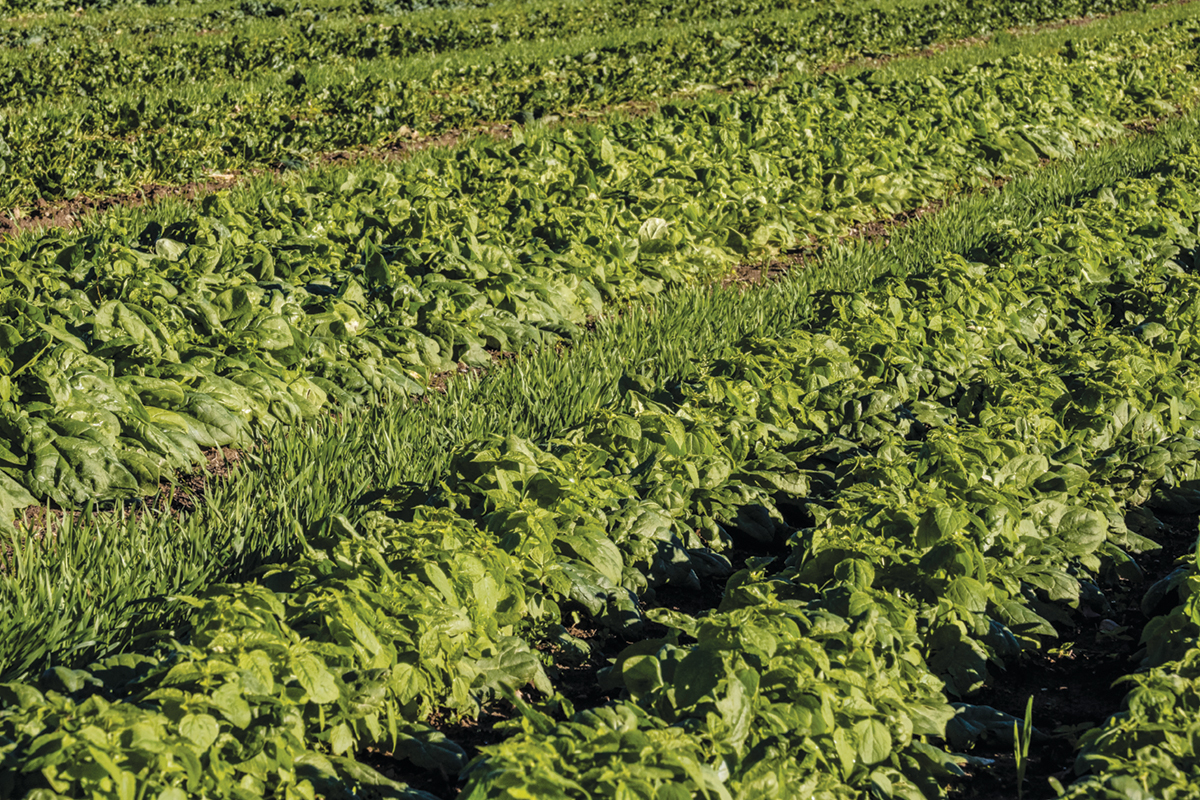
In addition to compost and manure, cover crops can be an invaluable fertility source. A study in Idaho found that legumes such as alfalfa, peas and pea-oat hay could provide 80–100% of the nitrogen needed for a potato crop, and if harvested for feed or seed, 40–60% of the required nitrogen for the subsequent crop. A California research project also showed a nitrogen replacement value of 150 pounds per acre from cover crops.
Organic farmers also use manures and composts regularly, especially when they’re accessible and affordable. Many organic farmers make their own compost, with livestock manure either from their own operations or from another farm, combined with a source of carbon such as straw, wood shavings or municipal yard waste. Manures and composts provide many of the same soil-building benefits as cover crops, but also supply a more readily available source of nutrients for crops. (Be sure to read the NOP regulations carefully to review prohibited substances. Also, current federal regulations dictate that raw manure may not be applied 90 days prior to harvest if the edible portion of the crop does not contact the soil, or 120 days prior to harvest if the edible portion of the crop does contact the soil.)
One of the biggest questions transitioning farmers have is how to supply enough nitrogen to their crops. Shifting from readily available N in inorganic fertilizers to organic N is definitely challenging and takes some time to master. Over time, it’s possible to supply enough N using cover crops, manures, compost and other types of organic soil amendments, but not all organic materials contain the same amount of N. Nitrogen availability differs among materials as well, so it’s also important to be familiar with their carbon to nitrogen ratio (C:N), which impacts the rate of N that’s released as the material is decomposed by microbes.
When considering which amendments to add to the soil, remember the C:N ratio of 24:1. Organic materials with a C:N ratio close to this figure have nutrients more closely aligned with what soil organisms require, and this promotes balanced decomposition (Table 1). As a general rule, high C:N materials (e.g., straw or wood chips) don’t supply high amounts of N because soil microbes will immobilize or “tie up” N from plants, whereas materials with a lower C:N ratio (e.g., manure) have enough N for microbes, and so any excess N is readily available for plants to use. However, be aware that additional fertility may be needed to meet a specific crop’s overall needs.
| Table 1. Carbon to Nitrogen Ratios of Common Crop Residues and Soil Amendments | ||
|---|---|---|
| slower | Material | C:N ratio |
| Rye straw | 82:1 | |
| Wheat straw | 80:1 | |
| Oat straw | 70:1 | |
| Corn stover | 57:1 | |
| Rye cover crop (flowering) | 37:1 | |
| Pea straw | 29:1 | |
| Rye cover crop (vegetative) | 26:1 | |
| Mature alfalfa hay | 25:1 | |
| Relative decomposition rate | Ideal microbial diet | 24:1 |
| faster | Rotted barnyard manure | 20:1 |
| Legume hay | 17:1 | |
| Beef manure | 17:1 | |
| Young alfalfa hay | 13:1 | |
| Hairy vetch cover crop | 11:1 | |
| Source: Carbon to Nitrogen Ratios in Cropping Systems (USDA-NRCS) | ||
Although high C:N materials don’t provide as much fertility as other sources, carbon does enhance soil structure over time and pools of N can accumulate in soils that are rich in organic matter. Improved soil structure also improves root growth, which can improve a crop’s uptake of nutrients and water. Nitrogen also needs to be regularly replenished, since much of it is removed annually when the crop is harvested. Using a combination of organic matter sources and taking regular soil tests is the best approach to managing organic N.
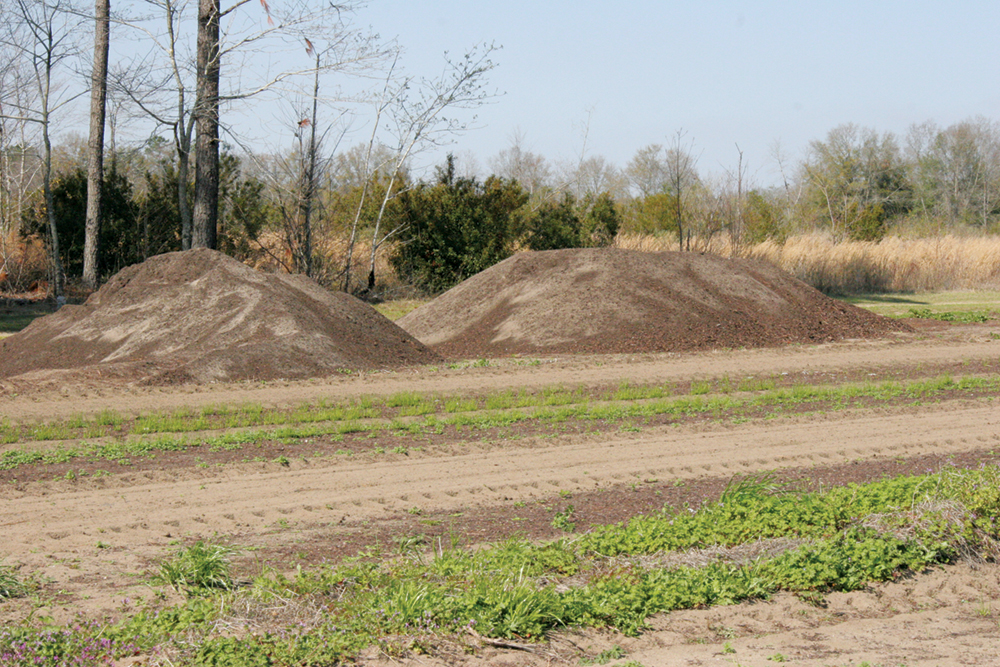
One reason to start building up your soils before beginning the transition is that when a soil is low in N, microbes will immobilize whatever N is in organic materials in the short term, making it unavailable to your crops until the materials are highly decayed.
Microbial products and inoculants exist on the market that have the potential to improve soil microbial activity, but they can be expensive, and any positive impacts are largely anecdotal. If you decide to use microbial products, it’s recommended that you closely observe your crops and soils and do a cost analysis to ensure their use is worth the cost. Giving the soil time to recalibrate and build a healthy microbial population can pay off when you do switch over to organic management, as the system will more readily cycle available N.
For more information on soil management, see SARE’s in-depth book, Building Soils for Better Crops.
Transition Strategies: Building Healthy Soils
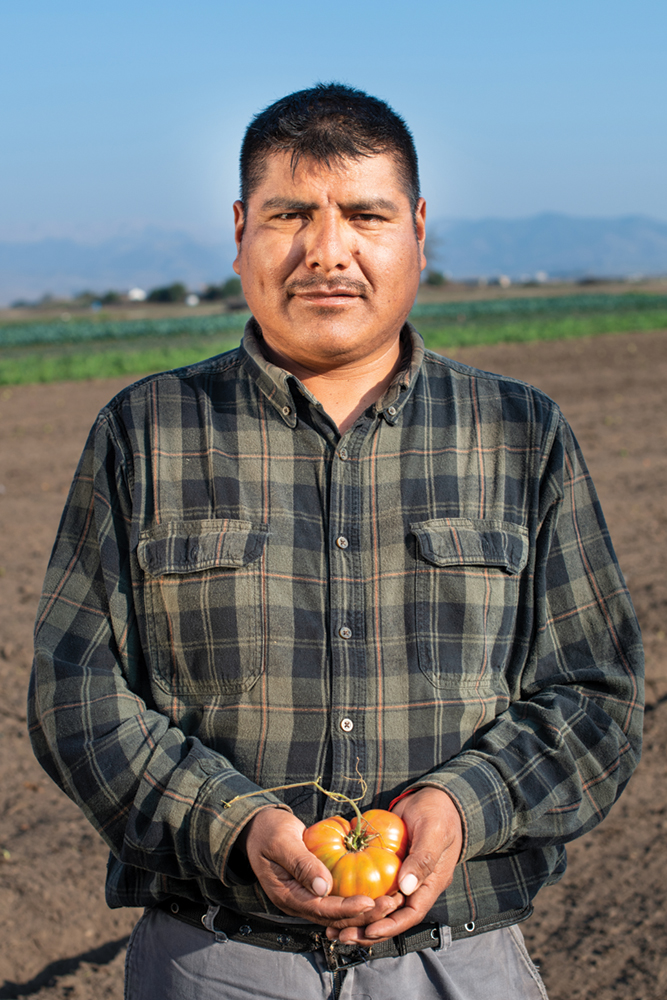
- Get to know your soils with a soil test for chemical and physical properties. This will give you baseline information. Note that although more comprehensive soil health tests exist, biological activities are more difficult to determine from soil tests. The NRCS recommends soil testing every 3–5 years.
- Determine strategies for building soil health, since your Organic System Plan will require this. Include some combination of cover crops, animal manures, composting and/or tillage strategies.
- Start building soil organic matter with cover crops, perennial crop phases and/or compost/manure before your transition.
- Research carefully which types and varieties of cover crops will work in your area. Regional differences will significantly impact what cover crops will grow and when they can be planted to generate the greatest benefits. SARE’s Managing Cover Crops Profitably includes detailed information on cover crops, including suggestions for common species based on hardiness zone and management goals.
- Consult the Organic Farming Research Foundation’s guide Reducing Risk through Best Soil Health Management Practices in Organic Crop Production, which includes a worksheet to help you evaluate how and where you can improve your soils by changing your practices.
Cover Crops as an Introductory Practice to Organic Farming
There’s no doubt that cover crops are important, not just in organic systems but in American farming systems overall. Between 2012 and 2017, cover crop acreage jumped approximately 50 percent, from roughly 10 million acres on 133,500 farms to more than 15 million acres on 153,400 farms, according to USDA census reports. Annual surveys from a collaborative project between SARE, the Conservation Technology Information Center (CTIC) and American Seed Trade Association (ASTA) find that growers who use cover crops are committed to the practice, and that they have data to show that cover crops provide a wide range of benefits.
According to the survey (www.sare.org/covercropsurvey), in drought years, growers reported consistently higher yields in the fields where they planted cover crops. But even in 2019, which was one of the wettest years on record, some growers still reported slight boosts in soybean, corn and wheat yields: 5%, 2% and 2.6%, respectively. This suggests that cover crops build organic matter, which not only improves the water-holding capacity of soils (useful for times of drought) but can also absorb excess moisture (useful during excessively wet seasons).
Growers in the CTIC/SARE survey also report other benefits from cover crops, including weed control, soil health, erosion control and livestock grazing. An economic analysis of survey results found that cover crops improve the bottom line in 1–3 years for commodity farmers when used in these situations (www.sare.org/resources/cover-crop-economics):
- Herbicide-resistant weeds are a problem (In fact, this may be a very good reason to transition to organic because individual weeds that have developed herbicide resistance no longer have an advantage in an organic system.)
- Cover crops are grazed
- Soil compaction is an issue
- Cover crops are used to speed up and ease the transition to no-till
- Soil moisture is at a deficit or irrigation is needed
- Fertilizer costs are high or manure nutrients need to be sequestered
- Incentive payments are received for using cover crops
For organic growers and researchers, these results don’t come as a surprise. Organic growers use cover crops to manage many facets of their systems. The well-established benefits of cover crops include:
- Protecting the soil from erosion when there are no cash crops planted
- Building soil organic matter, which builds a store of nutrients that are released in time with crop uptake
- Improving waterholding capacity and drainage via increased soil aggregation
- Improving soil structure, which can decrease compaction
- Decreasing weed populations
- Increasing soil microorganisms by providing a greater variety of food sources and by lengthening the portion of the year when living roots are present for soil organisms to feed on
- Providing livestock forage in either late fall or early spring
If you’re ready to plan a transition to organic, consider these strategies for using cover crops to help convert conventional ground:
- Research mixtures, practices, timing and rotations, and experiment in your field to see what works best. Consider talking to nearby farmers to learn what works for them.
- If you’re planning to keep the land in organically planted cover crops for two years, consider using a perennial like red clover and terminating it at the end of the second season. Because the regulation for transitioning to organic requires a three-year gap (36 months) between the final use of prohibited materials and the first harvest of an organic crop, a cash crop can be planted into this system after the second year of your cover crop, as long as the harvest occurs after that three-year period. It’s important to check with your certifying agent first to confirm when a crop will be eligible for certification.
- If you have a use for forages, consider starting with a sod crop like alfalfa or a mixed grass–legume hay. This is the best way to build soil structure and organic matter. It will also prevent annual weeds from establishing and should promote a natural decrease in density of weed seeds in the soil by predation, decay or termination prior to seed set. If weed seed production occurs during the establishment year of the sod crop, be sure to eliminate the weeds prior to seed set.
- Consider sowing perennial forages with a small-grain “nurse” crop. The nurse crop will shade out weeds while the forage crop establishes. Certain winter grains, such as winter wheat and spelt, can outcompete weeds more effectively than spring grains by being better established in the spring at the time when dominant weeds in the field will germinate. You can also sow spring grains and forages at the same time. Winter grain underseeded with clover is a popular combination on Northeastern farms.
- Consider weeds that emerge in early spring as a cover crop. Allow the weeds to grow and then terminate them ahead of any spring planting, especially row crops. Early spring weeds are less prone to quick set seed and should therefore allow significant growth ahead of seedbed preparation without the danger of enhancing weed seed production. This timely practice can greatly reduce existing weed seed banks.
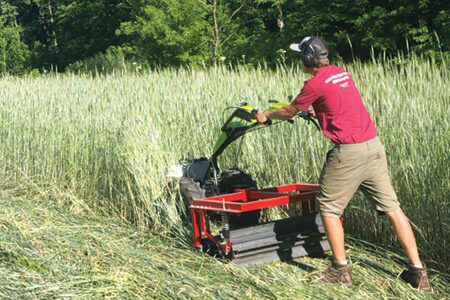
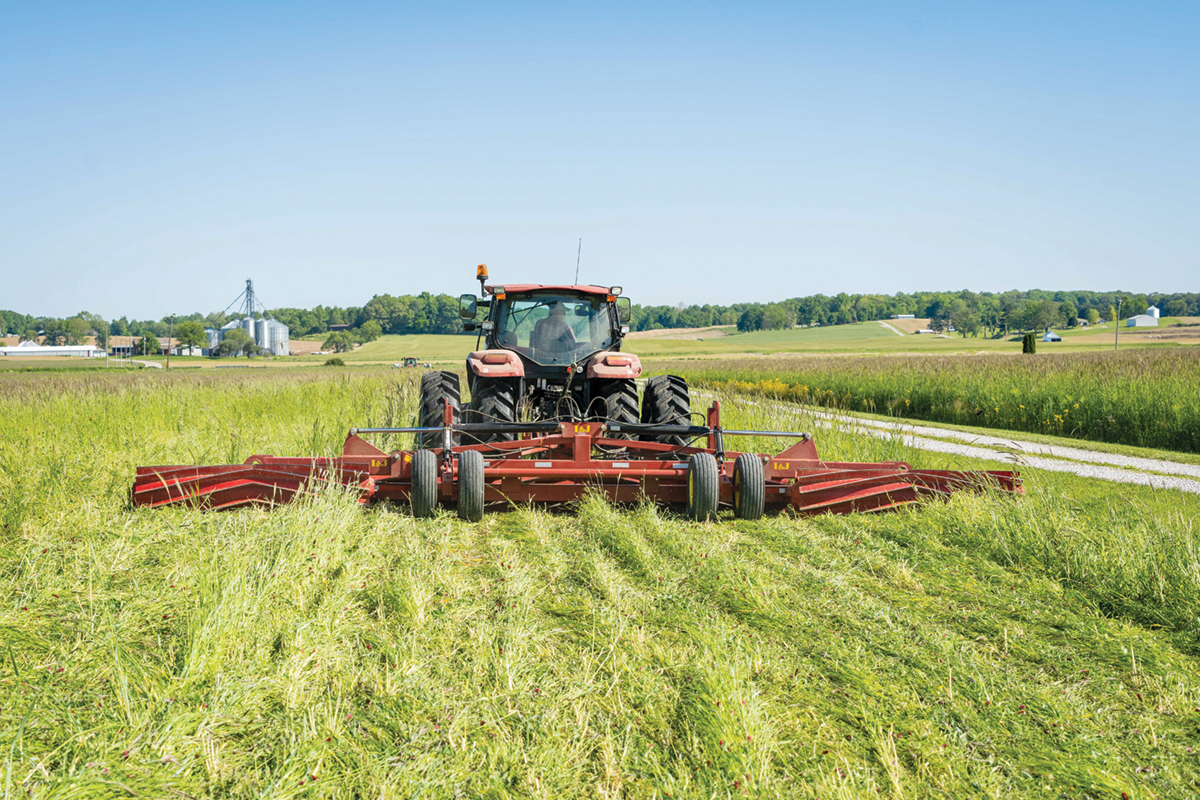
Conservation Tillage and No-Till
For many years, low intensity tillage practices were considered incompatible with organic farming. Without access to herbicides, organic farmers had to rely on careful tillage to manage weeds, incorporate cover crops and prepare beds for planting. This is still very true—but yes, there are ways to reduce the intensity and frequency of tillage.
Due to weed pressure and crop emergence, reducing the intensity of tillage in organic farming remains a challenge. It can be difficult to find the precise timing as far as letting the cover crop grow long enough to supply nutrients and smother weeds without delaying when you plant the next crop. However, by experimenting with varieties, cover crops, timing and machinery on your own farm, it’s possible to reduce tillage in an organic system. A useful publication that discusses these issues is ATTRA’s Reducing Tillage Intensity in Organic Production Systems.
In some smaller scale operations, organic farmers have found that using tarps to reduce tillage has been effective. In integrated crop and livestock operations, reducing tillage by rotating with perennial crops and grazing is an excellent way to build soil health. In other cases, organic farmers have used cover crops to serve as surface mulch for no-till-planted cash crops such as soybeans and squash.
While continuous no-till is unlikely in an organic system, “rotational no-till” is more achievable. This essentially means tilling occasionally as part of the rotation plan, for example using no-till methods to terminate a cover crop and plant a spring crop, and then using tillage in the fall after harvest to prepare for cover crop planting.
In the Pacific Northwest, extremely wet winters and springs can result in wet soils that delay planting. Using a SARE grant (FW12-035), Washington farmer Gary Miller found he could prepare no-till beds as many as six weeks earlier than tilled beds without harming soil structure. This earlier planting date led to higher yields of salad greens in the no-till beds due to the increased length of the growing season.
The type of cover crop you use and the timing of incorporation can also make a big difference. Finding the best approach for your system will likely require some fine tuning. For example, one SARE-funded study (FNC16-1055) conducted by two Iowa farmers found that although hairy vetch could supply approximately 100 pounds of nitrogen per acre, it was dependent upon growth stage, moisture availability and termination date. The growers found they would need to terminate the vetch at full flowering to get that amount of nitrogen. But in order to plant corn at a reasonable date, they needed an earlier cultivar of hairy vetch, such as Purple Bounty. They also found that after surviving a mild winter and at 50% flowering, the vetch did not roll down well with a roller crimper, suggesting the need for repeated passes of the roller crimper or that a different cover crop might be more effective.
When planting into a rolled cover crop, use a no-till planter that limits your tillage and soil disturbance just to the seed zone. You’ll need to adjust your no-till planter properly to cut through any residue because of the amount of biomass cover crops generate.
Keep in mind that in some areas of the United States, no-till fields will have lower temperatures than tilled fields. Mulched fields will also take longer to warm up. Since soil microorganisms are more active at warmer soil temperatures, if you’re using no-till, be sure to time your planting to coincide with microbial nutrient release, and/or consider switching to shorter season varieties. Consider a combination of reduced-tillage practices suited to your climate and system. In the Pacific Northwest, with its cold springs and shorter growing seasons, SARE-funded researchers (SW14-013) looked at strip tillage, which uses tillage only in narrow strips where seeds will be planted. One trial in western Washington compared different rotational tillage strategies to continuous no-till in vegetable production. The rotational tillage treatments included fall tillage to prepare a seed bed for cover crops and the use of no-till, strip till or full tillage in the spring to prepare fields for the next crop. Researchers found that planting lower biomass cover crops between rows, combined with strip tillage, might increase soil temperature and favor warm-season crops.
Transition Strategies: Lowering Tillage Intensity
- Try to reduce initial weed pressure as much as possible during transition. Use cover crops and heavy residue to smother weeds. Consider using a high residue cultivator, inter-row mower or inter-row roller crimper to keep as much mulch on the ground as possible.
- Focus on timing, as getting this right will go a long way toward a successful season. Mow or roll cover crops just before the end of their life cycle to prevent them from going to seed and becoming weed-like. The ideal time to terminate a cover crop is when it starts to enter its reproductive stage. Ryes and small grains tend to mature uniformly. Vetch and legumes tend to flower at different times, so try to mow or roll when somewhere between 50–100% of the crop is flowering.
- Search for the right machinery to fit your system. Ideally, in a lower-intensity tillage situation, your cultivator should be able to kill the cover crop, leave a mulch on the ground and also prepare the soil. The Rodale Institute has developed a “one-pass no-till system” that combines a roller crimper with a no-till planter that can roll down a cover crop and plant into the mulch in a single pass, but most organic farmers have multiple pieces of tillage equipment.
- Consider eliminating fall tillage in row crops such as corn and soybeans. Leaving crop residue on the soil surface with stubble from these crops can provide longer weed seed predation opportunities, catch greater amounts of snow, protect the soil and allow for earlier weed germination in the spring ahead of seed bed preparation. Light tillage of soybean stubble is all that’s needed for spring small grain seeding. Corn stalks chop much more efficiently in the spring, and these fields can then be lightly tilled for soybean planting. This isn’t exactly no-till, but it does eliminate the need for disruptive deep tillage.
Pest Management
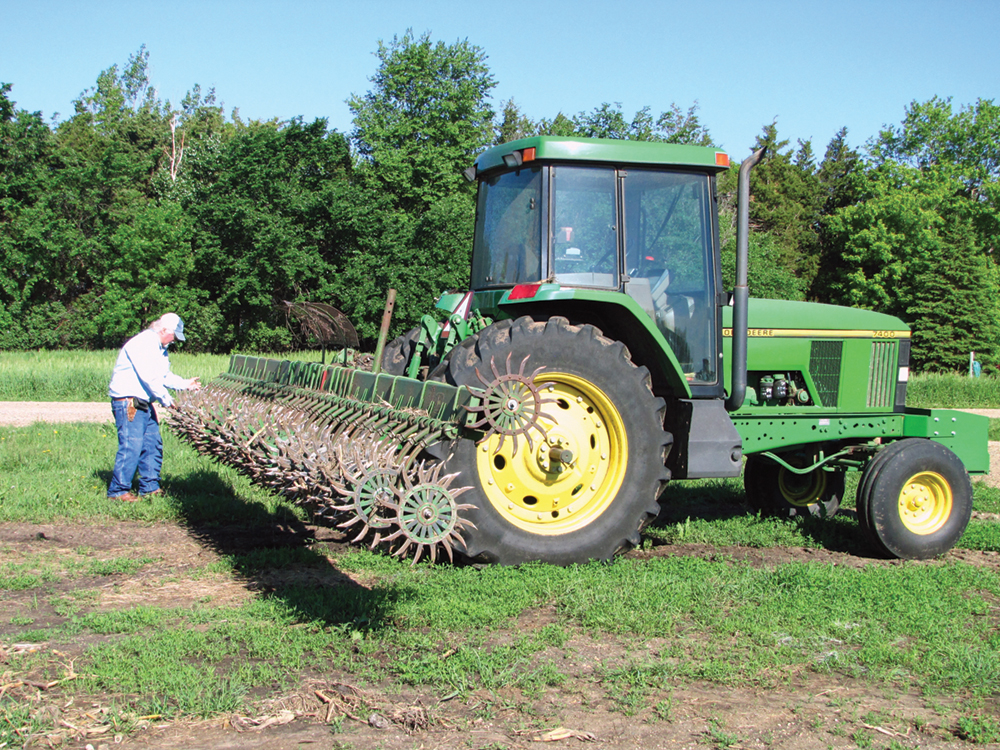
Organic farming requires more intensive management of pests than non-organic systems; with no access to synthetic broad-spectrum insecticides and herbicides, you’ll need to learn about the life cycle of the pests that attack your crops in order to develop effective, targeted management strategies. Organic farmers also place an emphasis on practices that help prevent pest problems from arising.
Weeds
One of the biggest challenges facing growers transitioning to organic is weed management. It’s often ranked number one among research priorities and it’s not hard to see why: successful weed management is difficult in organic systems, especially in transitioning ones. The decisions organic farmers make about crop rotations and tillage practices are heavily influenced by their weed management needs. Managing weeds organically requires a change in attitude and approach, including a willingness to develop a tolerance for higher weed populations than what you may be used to.
To organic growers, a field doesn’t have to be weed free to be productive. In fact, results from the side-by-side trial at the Rodale Institute showed that most crops can tolerate a few weeds without a measurable impact on yield or quality, and that organic crops can tolerate weeds better than non-organic crops. In the trial, even with higher weed pressure, the organic plots yielded as well as the non-organic plots. This was due to a combination of factors, including a less competitive weed community and increased yield capacity in the organic plots.
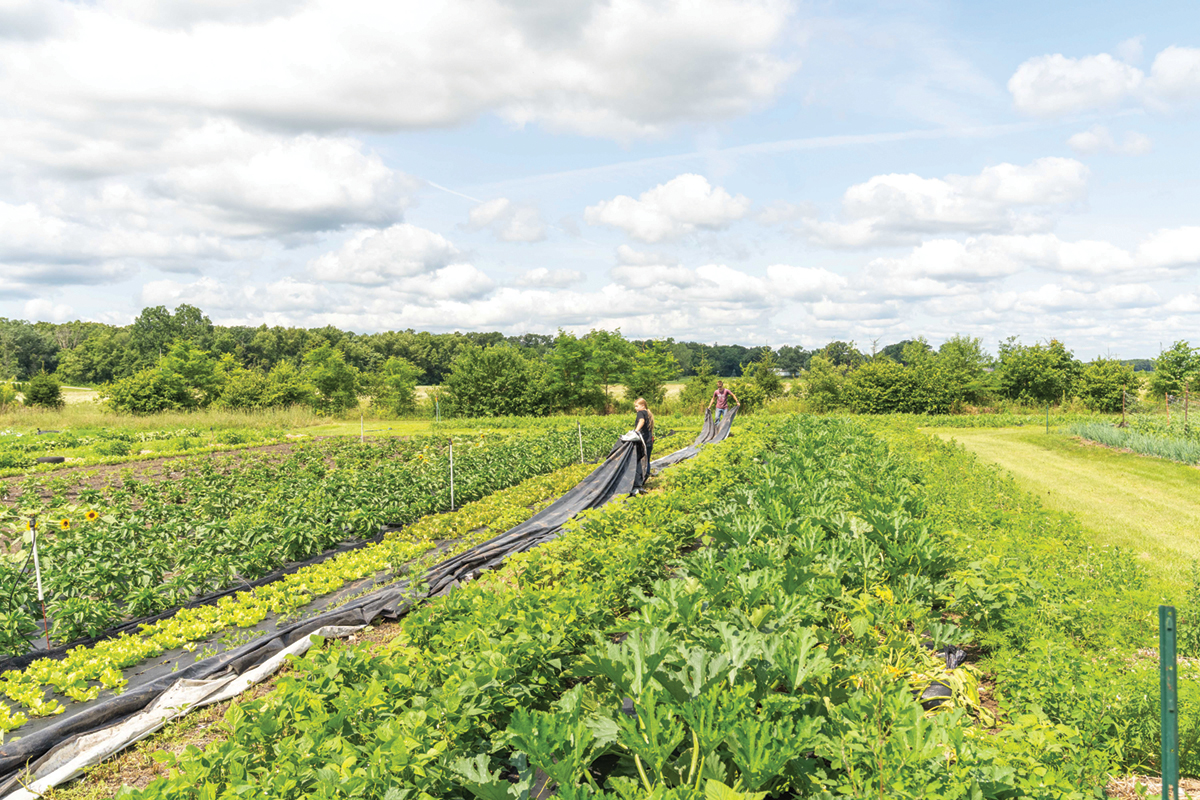
Managing weeds in organic systems, often referred to as ecological weed management, requires a whole host of tools that, when used together, can be very effective. Often called the “many little hammers” approach, instead of using a one-shot herbicide, it entails a variety of cultural and physical practices such as mowing, mulching, sanitation, livestock grazing, mechanical cultivation, adjustments to planting (e.g., dates, row spacing, seeding rates), hand weeding, thermal or flame weeding, and crop rotations.
Cover crops, for example, when grown in a rotation, are excellent at smothering weeds; a dense mat can prevent weed germination or crowd out weeds struggling to gain a toehold. Forages are similar; in a five-year alfalfa, corn and oat rotation, a three-year alfalfa stand goes a long way to getting the weed seed bank out of the field. Another living mulch strategy might be to interseed one crop into another, which can be done with aircraft, tractors or by hand. The second crop, which should germinate after the first, will compete for nutrients and moisture, so only use this technique when crops are well established or have ample soil fertility and moisture. Dutch white clover, for example, is effective in corn or late-season brassicas. Its high density keeps out weeds, it fixes its own nitrogen, and it’s low growing so it doesn’t compete with the crop for sunlight.
Thirty years of research into weed management in organic and transitioning systems has now yielded information that is helping growers achieve high levels of weed control. For example, careful weed control was one reason that an Iowa study found no yield reduction in soybeans, and a yield loss in corn only for the first year of a transition trial. “We attribute our results to high managerial experience in producing diverse crops and accurately operating various implements in organic systems,” says project leader Kathleen Delate, an Iowa State University horticulture professor.
Transition Strategies: Weeds
- Select land with low weed populations when identifying where to plant crops.
- Identify weed problems before they start and address them through crop rotations.
- Distinguish between annual and perennial weeds, and manage weeds according to their life cycle and reproductive strategies. For example, tilling weeds like quackgrass and Canada thistle is ineffective, since tillage may propagate their rhizomes. Repeated cultivation, however, forces them to draw upon their storage and can eventually weaken the population. Biennials, on the other hand, must not be allowed to go to seed; persistent mowing can eventually exhaust root reserves.
- Learn to identify weeds, such as common lambsquarter, that can serve as reservoirs for viral and bacterial crop diseases that get transmitted to crops by insects.
- Plant higher crop densities to block weed germination.
- To disrupt the life cycle of various weeds and reduce their competitiveness, shift between warm- and cool-season crops, and broadleaves and grasses in your rotation.
- Include crops that have natural weed inhibitors, such as rye and sorghum.
- Plant crops that can be sown late in the season and that are easily cultivated.
- Switch to transplants in horticultural crops to provide a jump on the season. Transplanting also allows more soil to be thrown up around the plant without causing damage.
- Control the weed seed population and keep it as low as possible, not only to manage weeds and prevent yield losses, but also to prevent those weeds from going to seed and building up a soil seed bank.
- Allow more time for weed seed predation by birds and insects in both fall and spring by eliminating fall tillage after harvest of corn, soybeans, sunflowers and other fall harvested row crops.
- Consult the book Manage Weeds on Your Farm: A Guide to Ecological Strategies for comprehensive guidance on how to identify problem weeds and use integrated cultural and physical control strategies that target weeds’ vulnerabilities.
Insects
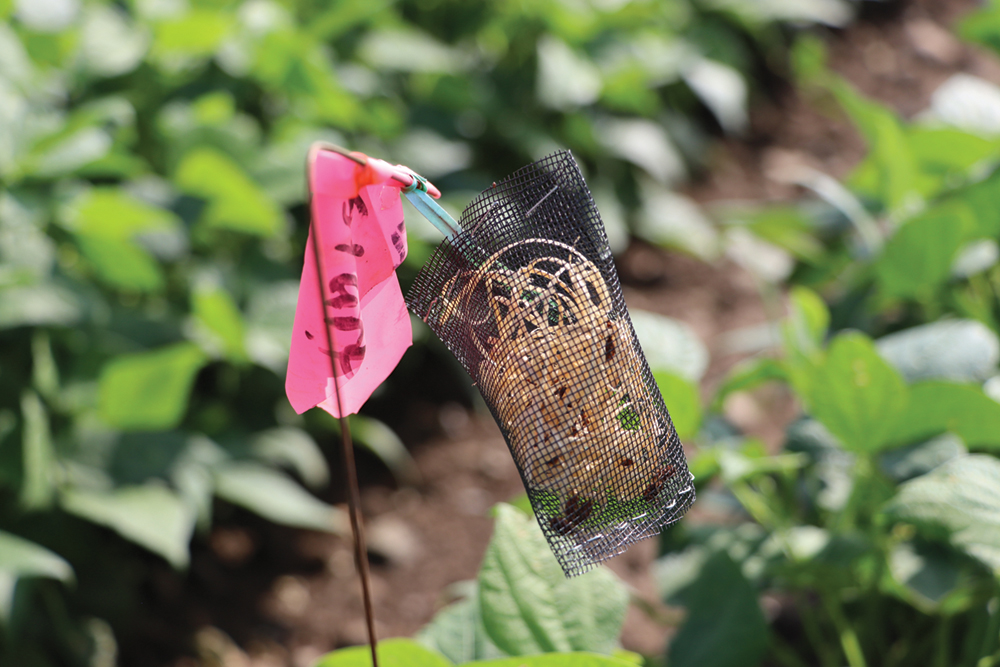
Although certain insecticides such as Bacillus thuringiensis (Bt) are permitted under certain conditions, organic farmers don’t rely on them exclusively, and these products can often be cost prohibitive, especially for large-scale field crops. Rather, farmers use multiple practices to keep insect pest populations under control, and they only use sprays as back up when other cultural and physical management strategies aren’t effective.
The most effective pest management practices are based on ecological principles and are integral to organic agriculture, for example, using crop rotations and enhancing biodiversity. These practices can disrupt pest cycles and promote natural predators. In addition, to manage insect pests effectively, you’ll want to determine threshold levels of pest populations and scout fields regularly, introduce natural predators, promote natural habitats for predators, use physical barriers and follow good sanitation practices as needed.
The approaches you take to insect management will depend largely on your system and geography. In a SARE-funded project (OS18-121) on an organic vegetable farm in southern Texas, researchers at the University of Texas, Rio Grande Valley found that a sunn hemp cover crop resulted in significantly lower insect pest damage and a higher population of beneficial insects compared to a cowpea cover crop. Sunn hemp, which grows well in the area’s hot, semiarid conditions, also provided effective weed control compared to a summer fallow.
In New York, where the wet, humid summers pose enormous pest challenges for organic fruit production, Cornell University researchers found that organic grape vineyards could be as pest and disease free as conventional ones. During a three-year, SARE-funded experiment (LNE90-020) comparing organic and conventional grape production with three varieties, the use of pheromone disruption and insect scouting allowed researchers to eliminate regular insecticide applications. The researchers also learned that pheromones successfully controlled grape berry moths and that scouting allowed them to control insects that emerged when the regular spraying was eliminated. They avoided an anticipated spike in grape leafhoppers by releasing predatory wasps.
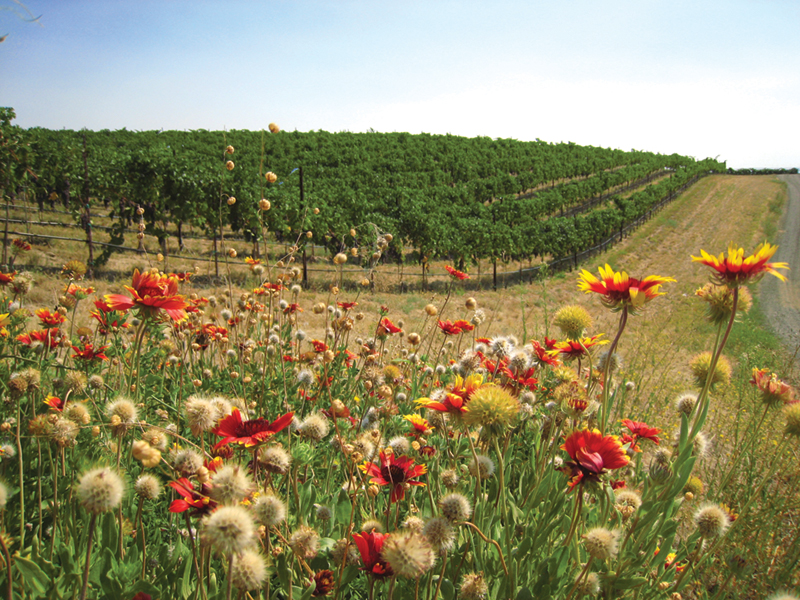
In Minnesota, organic berry farmer Andrew Petran used a SARE grant (FNC19-1188) to compare two approaches to managing insects in strawberries: a traditional organic spray regimen in an open field and the use of exclusion netting with a reduced spray regimen. Petran sprayed open fields twice per week and netted fields twice per month, and he released mason bees in the nets for pollination. After two years, Petran found that using nets resulted in higher yields and superior fruit quality, enough so that the netting system would pay for itself within two years.In South Carolina, Clemson University Assistant Professor Juan Carlos Melgar used a SARE grant (OS16-094) to compare the practice of bagging fruit to regular pest control methods in both conventional and organic peach orchards. Using brown bags to protect fruit from diseases and insects such as plum curculio had no positive effect in the conventional system, but it increased marketable fruit yield by 11% in the organic system because of the protection the bags offered. The practice comes with a high labor requirement and cost, but Melgar found it can be profitable if labor is available and if the organic fruit is sold directly to consumers.
Transition Strategies: Insects
- Be aware that eliminating pesticides can lead to temporary outbreaks of pests.
- Use a combination of cultural, mechanical and biological control strategies before resorting to chemical solutions.
- Minimize pesticide applications before you start the transition, and use pesticides that have the least impact on natural enemies. This will make the transition less jarring.
- Adopt integrated pest management (IPM) practices, such as scouting and setting thresholds for pest populations, either before or as soon as you begin your transition.
- Gain experience identifying pests and natural predators in the field.
- Become familiar with acceptable management materials and start trying them.
- Plan your rotation and soil-building strategies to manage insects and diseases.
Pathogens
Organic growers use numerous strategies to control soil-borne diseases, including composts, variety selection and the main method, crop rotations. Since most pathogens are plant specific, rotations break the cycle of pathogen populations by removing their host. Compost has long been known to effectively suppress plant pathogens. Planting resistant varieties and adding organic matter also have been shown to reduce soil-borne diseases. For example:
- In the SAFS project in California, a four-year organic rotation had lower incidence of corky root and red root rot than the two-year conventional rotation.
- An on-farm tomato study in the Central Valley of California showed that organically managed soils may be suppressive to the organism that causes corky root.
- In North Carolina, another SARE-funded study (LS01-128) showed disease significantly reduced by organic soil fertility amendments on organic versus conventional farms.
Other disease control methods include soil solarization, biofumigation, biosolarization and anaerobic soil disinfestation. These methods kill pathogens through a variety of means, including heat, oxygen deficit and/or release of natural toxins. Although the actual effects of these treatments are short term, they can contribute to a shift in the soil microbiome, which can lead to longer-lasting disease suppression.
Growers also use biofungicides, which are a formulation of beneficial soil organisms, to prevent or control plant diseases. While some of these products target specific pathogens or a group of pathogens, others are more broad spectrum and can suppress a wider range of pathogens or enhance crop disease resistance. Use them as one part of your overall integrated disease management strategy.
Plant pathogens are controlled using many of the same techniques to control soil-borne diseases: maintaining crop and soil health, and using cultural controls such as resistant cultivars and sanitation. Applications of approved pesticides can be important for certain foliar pathogens. To control late blight, downy mildew and powdery mildew, growers will use copper-, sulfur- and bicarbonate-based compounds, sometimes combining these with other practices such as plant spacing and resistant varieties.
Transition Strategies: Pathogens
Since most pathogens are plant specific, rotations break the cycle of pathogen populations by removing their host.
- Learn the prevalent pathogens of each of your crops, including their life cycles, seasonal patterns and conditions that favor disease development.
- Diversify your crops and design your crop rotation to deter pathogens.
- Look for disease-resistant cultivars that are adapted to your region and have been developed for organic production systems.
- Use multiple strategies, such as green manure, mustard meal or other amendments, and anaerobic soil disinfestation, to modify your soil microbiome to suppress pathogens.
- Build healthy soils that have good tilth, drainage and high levels of organic matter. Better drainage makes the environment less hospitable for pathogens and better for plant roots.
- Remove visibly diseased weeds and crops before the pathogen spreads.
- Attempt to identify specific pathogens based on symptoms so you know how to prevent and treat them.
- Consider setting up small side-by-side trials of different varieties or biological control treatments to explore what works best in your system.
- Provide proper aeration around plants by adjusting plant spacing. When growing too close together, plants may increase local humidity and improve conditions for pathogens to spread.
- Keep loose soil covered with mulches to reduce the likelihood of soil-borne pathogens splashing onto crop plants.
- Know what products you’re planning to use. Look for research that supports their claims. Make certain they will do what they are intended to do and are approved for organic use.
